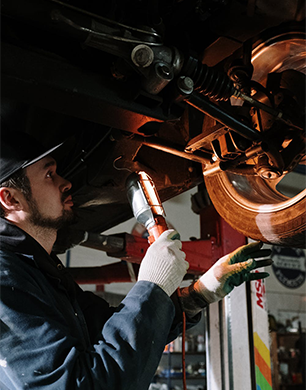
Photo Credit: cottonbro via www.pexels.com
Car ownership is a passport to easy travel, the ability to work further away from home, and a way to ensure that the children are brought home safely after a busy school day, and the thought of your MOT putting your car out of action for any length of time, should your vehicle fail the test, can be a horror. This has happened a lot with motorists not considering MOT checks seriously and driving freely in major UK areas such as London or even Scotland!
Why not beat the odds by ensuring that your car is as MOT-ready as you can make it, but following these four MOT test pre-checks that you can do on your own?
Alert Others
Testing your lights – all of them – is an excellent way to get ahead with your MOT. Not only are light fails the most common cause of MOT problems, but your lights are vital for a number of reasons when you are driving, even in broad daylight. Your headlights should be properly aligned and bright enough to light your way, without being so bright that other road users are dazzled. Brake lights must be fully operational and easy to see in daylight at short notice. Your indicators are a vital tool in your safe road use, and these will be put through their paces. Even your dashboard warning lights are examined and checked to make sure that they are working as intended and that none of them are ignited at the time of the test. The MOT inspector will test the various switches, levers and buttons on the dashboard, to make sure that they all work well, without undue pressure, and perform the action labeled on the control. The MOT inspector will also test your horn as it is vital that this is in good working order should you experience an emergency and need to alert people to your predicament in a hurry.
Stopping Power
Brakes were one of the three first items on the original MOT checklist, all the way back in 1960, along with lights and steering, and they are still one of the most important parts of your vehicle – you literally cannot stop without it! The entire brake system is carefully checked to make sure that the physical components are present and in good order, and then the function of the brakes, both regular slowing down and emergency stops, is tested on both the parking or hand brake and the pedal-driven service brakes. While you cannot exactly mess about under the hood, you can make sure your brakes are working well. Take your car to a deserted car park or similar space and put them through their paces, perhaps with a buddy along to observe from the outside. You can aslo book MOT from Fife Autocentre – their team of experts is able to MOT your vehicle up to thirty days before the expiry of your existing MOT certificate.
Tyre Check
The only part of the car in contact with the roads, your wheels and tyres should always be in great condition. The MOT will look at the general condition of your tyres, checking them for cleanliness, structural integrity and proper fitting, as well as checking that your tread depth is within legal limits – although opting for a 3mm tread depth rather than the legal 1.6mm is only sensible, too low a tread will receive a warning advisory that the tyres must be changed soon. The MOT inspector will also check the inflation of your tyres to make sure that they are inflated to within the recommended range. This is to ensure that the tyres work as intended: over and underinflation can cause problems with your ride.
Clean It Up
Finally, make sure your car is clean and in good general condition. Cleaning your car yourself, inside and out will give you a good idea of the condition of the car, as well as alerting you to any problems with the windows and windscreens. The MOT inspector assesses your car on its cleanliness and general condition, so taking steps to make sure it looks sturdy and well-cared for is an easy good start.

